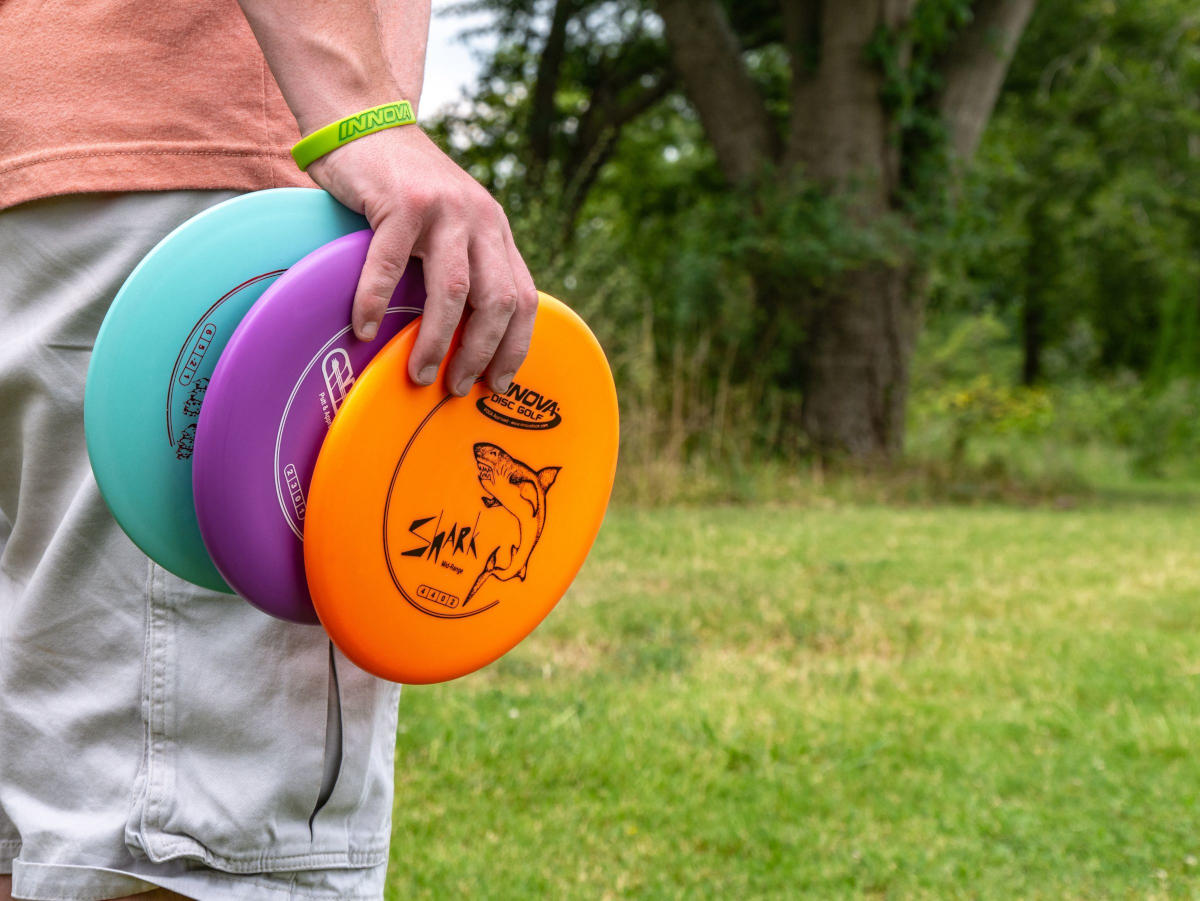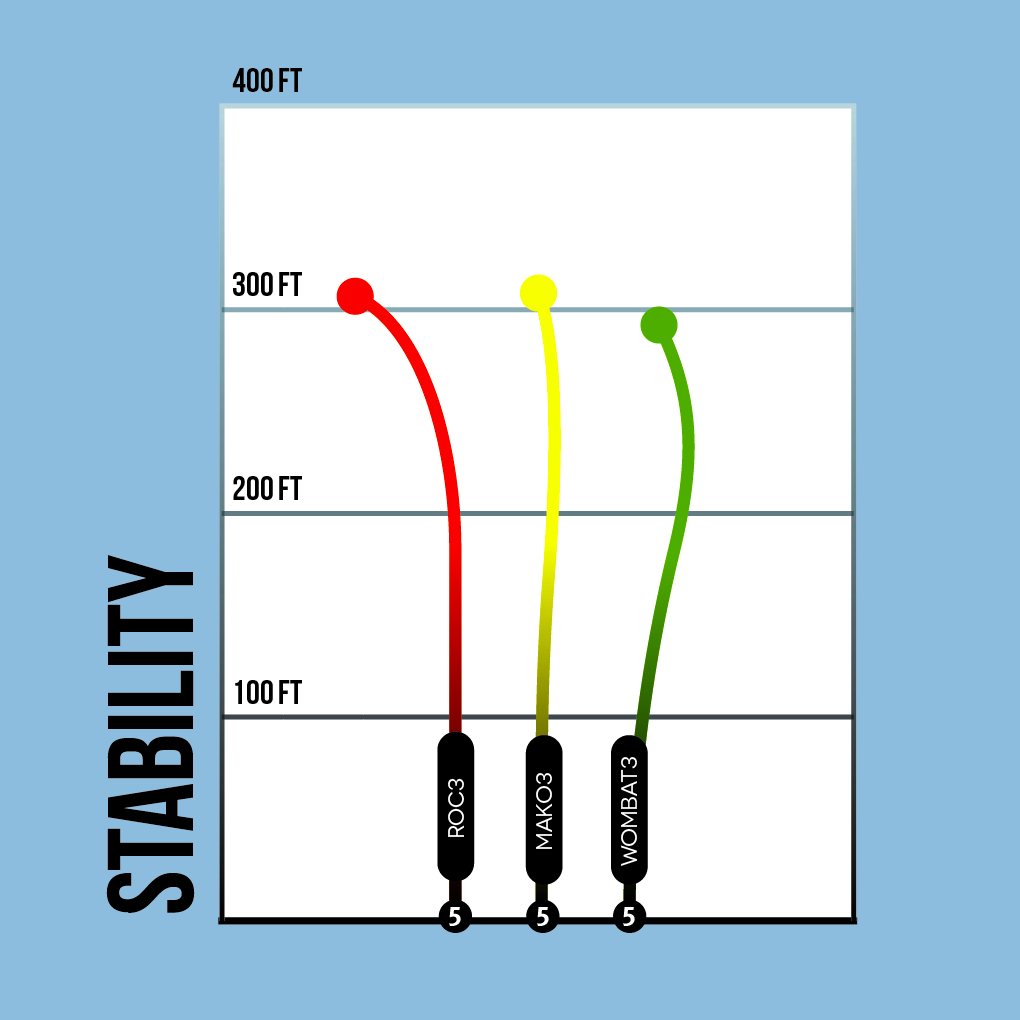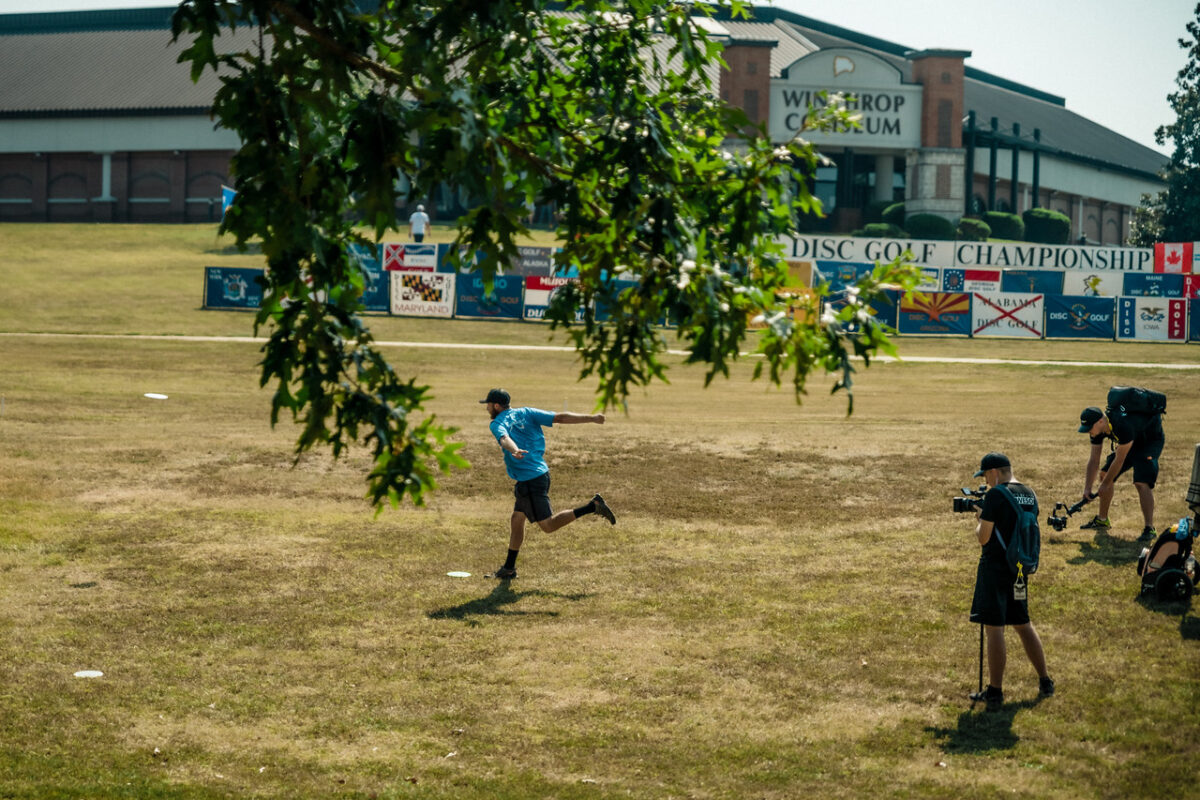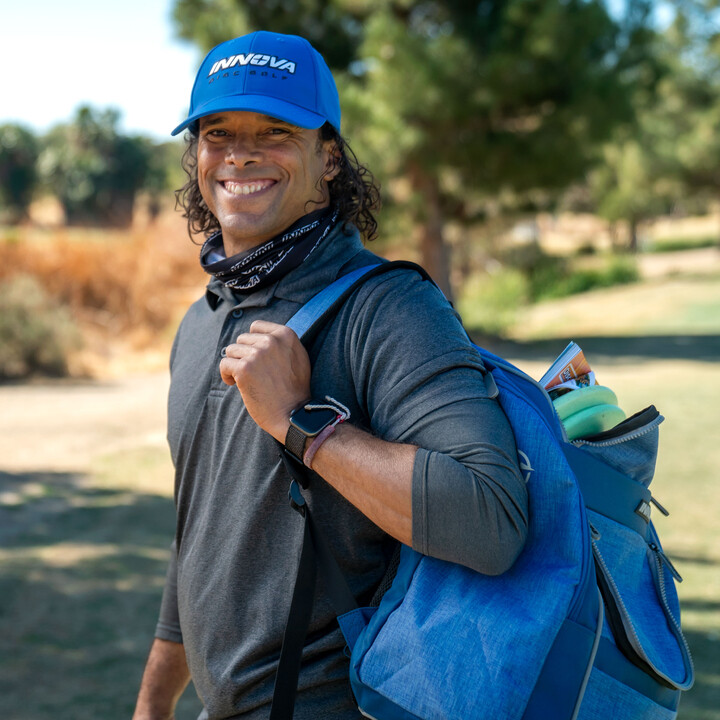15 Most Common Disc Golf Beginner Mistakes
TOC
Table of Contents
Disc Golf Beginner Mistakes & How To Fix Them
So you’ve started your foray into disc golf and are confused by all the information out there. Do not be afraid, you have come to the right place! This article outlines all you need to know to progress in the sport and not get tripped up by the pitfalls that so many of us have dealt with before you. From warm up routines to disc selection to rules to practice style – you’ve come to the right place to improve your disc golf game. Ok, let’s take a look at these beginner tips in more detail…
1) Starting with the Wrong Discs
When getting into disc golf it is easy to think that all discs fly the same. That’s simply not true. Like other sports, there is equipment better suited to beginners. Many new players mistakenly throw discs that are too fast, too overstable, and too heavy for their arm speed. There can be a number of reason for this, but the main one is that most new player just don’t know what’s best to throw.
Beginners should start with slower, neutral flying discs (think straight with minimal end of flight fade). Reach for midranges and putters first. Also select discs with weights 169 grams or less. These factors will allow you to get a more true flight out of your shots. Next, learn to consistently throw these discs on a straight flight path. Straight flights may not come at first, but stick with it. Eventually, this will open the door to a myriad of shot shapes.
Innova makes a Beginner Disc Set that gives you three disc golf discs perfect for players new to the game.

2) Not Understanding Flight Numbers Properly
We have some homework for you: study flight numbers! It is hugely beneficial to be able to look at the flight numbers of a disc and understand how it flies, then see which discs are best for you. Let’s unpack flight numbers.
For starters, the flight number rating system was invented by Innova Co-Founder Dave Dunipace. It was invented to create a language to describe the flight of a disc. He ascribed four different ratings; speed, glide, turn and fade. Below, we will keep it simple and describe each one.
Speed – The speed of a disc is determined by the width of the rim. The wider the rim, the faster the speed. These ratings range from 1-14.
Glide – This number defines how far a disc will push forward and stay aloft. Higher glide means that a disc will stay aloft for a longer period. This also creates more distance for beginners with ease. Glide ratings range from 1-7.
Turn – This is an advanced rating that has to do with how discs behave when thrown at high speeds. High speed turn defines how “Flippy” or stable a disc is in mid-flight. Turn ratings range from -5 to +1. The higher the number the more overstable the flight.
Fade – The final number details a disc’s end of flight fade. This defines how quickly the disc wants to dump to the ground. The higher the number the more quickly it will fade to the ground. Lower numbers allow for a more neutral and straight finish. Fade ratings range from 0-5.
To sum up: Beginners should select discs that are slower (less than Speed 9) and have minimal Fade (less than 2).

3) Throwing Too Many Different Discs
Use the KISS method when first starting out, ‘Keep it simple silly!’ That means playing and practicing with only a few discs. This way you can learn each disc well and what they can do in various situations. It’s fine to experiment with a new disc here or there in the practice field. But don’t overwhelm yourself with new options. There’s another popular saying in disc golf, ‘Throw what you know.’ Like other sports, much of the game is about confidence. If you have confidence in the discs you are throwing, more often than not, you’ll see positive results.
4) Focusing on Distance over Accuracy
This may be the biggest mistake beginners make. YouTube is filled with tutorials on how to throw further and increase distance. IGNORE THEM! Focus on your technique. Remember, slow is smooth and smooth is far. When starting the sport this is a counter-intuitive thought. You may be thinking: ‘Shouldn’t I work harder and put more effort into my throws to increase distance.’ But stop yourself there. The effort you should put into your game is in your technique. This will eventually result in more distance. Head out to the field or a shorter disc golf course and choose to throw consistently accurate shots rather than for max distance.
5) Bad Throwing Form
As a beginner you are a blank canvas, a piece of clay with infinite possibilities. This is to be respected! Many people learn poor technique and have to unlearn many aspects of their throw and then re-learn proper mechanics. I urge you to take it slow and learn proper technique. Let’s quickly unpack your backhand mechanics from the ground up.
- Foot work
- Engage hips with closed final step
- Reach back straight and pull through straight
- Release and pivot on the heel of your plant foot
- Follow through with non-throwing hand and release energy of throw
Reading can only get us so far with proper technique. Let’s take a look at how Simon Lizotte breaks down the proper backhand throw mechanics. Take note of how he works from the ground up and keeps it slow and smooth.
6) Overthrowing Shots / Throwing Too Hard
We call this the John Travolta Method. It happens when players overthrow and finish with their hand in the air ready for some Saturday Night Fever. Slow down! It is counter-intuitive, but it works. It is also an extremely common mistake for a beginner’s throwing motion. This also lends itself to disc selection. If you are throwing a disc that is too overstable then you are forced to overthrow and learn improper technique. Choose a neutral flying mid-range or putter and throw slow and smooth. It may take time but trust us, you will benefit in the long run.
7) Not Adjusting for Conditions
Disc golf is an outdoor sport. We must deal with the elements and every season has its challenges. Many beginners are flabbergasted when a disc takes an unexpected flight. This often happens due to environmental factors present on the course. Let’s take a look at a few.
- Wind – Headwinds require a more overstable disc for consistent flights. Tailwinds make a disc more overstable and means you can disc down. Crosswinds are variable depending on the direction of the wind. We highly advise doing fieldwork to account for how to play in the wind.
- Cold – Simplify your game. You are cold and do not want to injure yourself. This means a shorter run up and throwing lighter discs. We also recommend throwing a grippier plastic such as GStar or Pro. Discs have a tendency to slip out early due to cold hands. Hand warmers are your friend!
- Uphill – Adjust the trajectory of your throw to match the incline (decline) of the shot. Also for uphill shots, throw more understable discs. Severe downhill shots require stable, even overstable discs.
- Wet – This is similar to playing in the cold with more effort to keep your discs dry. Start by throwing a gummier plastic such as GStar or Pro. Simplify your swing and X-Step to reduce the chances of slipping. Utilize a chalk bag to keep your hands dry. Pro tip: keep a hand warmer in your throwing hand pocket to keep your hands dry! Always use an umbrella in the rain. Only dry off the area you are going to grip the disc with. Players waste untold energy by trying to dry their entire disc.
- Caddy Up – And finally, when playing a competitive round, get yourself a caddy! Caddies help in untold ways by keeping your discs dry so that you can simply focus on throwing your shots.
8) Wait, There are Rules?
Most know the basics on how to play golf and disc golf. And that can get you pretty far down the road. But when you’re ready to start playing a bit more seriously, you may need to brush up on a few disc golf specific rules, like:
- Stance – For throws outside the tee box,you must not pass your disc lie. The space to plant your foot during the throw is about the size of a sheet of paper. The other foot must be even or behind your line of play.
- 10 Meters (Putting) – Inside of 10 Meters you must maintain your stance until the putt has come to rest either in the basket or on the ground. This means you must not fall forward beyond the line of play.
- Out Of Bounds (OB) – OB is generally marked by rope, flags, tall grass or water. You must take a stroke and throw from the last point you were in bounds.
Wanna learn a few more? Here are 5 More Rules to get a better understanding of the game.

9) Practice, Practice, Practice
The best way to get better is to practice, plain and simple. You are a beginner and you have your disc golf world in front of you. It is paramount that new players learn the sport the right way and avoid the mistakes so many of us have encountered.
Practice takes shape in multiple ways. First and foremost is plopping a basket in your yard and practice putting. This is the single best way to shave strokes off your game. Get 10 or so of the same putter and get to work from different distances with different wind. This is something that can be done consistently and with minimum effort. Fieldwork is the best way to learn distance shots. Head out to an open field and throw shots with intention. Apply what you’ve learned in practice during your rounds. You’ll be pleased with the results.
10) Only Playing Solo
The only way to get better is to play. Whether that is practice putting, doing field work or playing a round it doesn’t matter. Just get out there. The issue arises when seeking friends to play with. Oftentimes beginners will skip disc golf outings due to no one being able to make it. Play disc golf solo. It is quite possible that you will grow in the sport quicker by playing solo due to less distraction. You are able to focus- more on the task at hand and notice mistakes. The same goes for putting practice at home. Practice rounds become a beautiful walk in the park where you can pay attention to the beauty that surrounds you. Ohh disc golf, what a gift!
11) Skipping the Warm Up
Wait, I need to stretch and warm up for disc golf? Yes!! Disc golf is a sport. Injuries can and will happen. Many players show up to the course and simply walk to hole one and throw max power. Don’t do this! Your body will thank you in the long run. Do static as well as dynamic stretching to ensure your entire body is ready. Simply take 15 minutes before your round and you can avoid nagging injuries that keep you from other activities in your life. Check out Seth Munsey from Disc Golf Strong for a warm up routine specifically designed for disc golf.
12) Getting Bad Advice From Other Beginners
Disc golf is just like any other aspect in life. Listen to those who have walked the path before you. They are able to help you along much better than someone walking the path for the first time. While you may play with other beginners and glean information off each other, it is best to take advice from players with more experience. Beginners are prone to leading you down the road of disinformation and frustration. Sure, play rounds with them and seek camaraderie. However be wary of advice and consult players you know have played the sport for years.
13) Taking Things Too Seriously; Don’t Be a Disc Golfer.
We are all dynamic human beings with all sorts of activities and outlets in our lives. Our peace of mind is too precious to allow a sport to spoil our ease. I say this having learned this lesson the hard way. As I climbed the amateur ranks I became a disc golfer. What I mean by this is that I took myself and the sport too seriously and at times lost the fun nature of our incredible sport.
Be easy on yourself as progress comes in time. There will be plenty of setbacks and throws that seem as if you are doomed to mediocrity for eternity. Be steadfast in your effort! With the right guidance and practice regimen you WILL see results in a short amount of time. Disc golf is a sport that allows you to progress quickly in the beginning while taking a lifetime to master. Be easy on yourself.

14) Getting Frustrated and Giving Up
No one likes a sore loser. Disc golf is going to test your patience, especially in the beginning of your career. You will toss shots in the drink and throw OB and miss short putts and a myriad of other frustrating things that will test your last nerve. Stay with it! This is where disc golf is a great teacher. It always behooves you to learn something from your pitfalls than to fall prey to the mind that wants to quit because it did something “bad.”
This may mean playing more rounds with friends or in community so your frustration does not boil over. You know your temperament. Find your sustainable pocket of play and see what works best for keeping your cool. Balance your rounds between casual and competitive and sprinkle in plenty of practice putting. This will keep things light and allow casual rounds to be more enjoyable while gathering data points instead of taking things too seriously.
15) Not Being Mindful of the Current Throw
Think of disc golf as 54 chances to slow everything down for fifteen seconds at a time and pay attention, evaluate and execute. No matter the outcome of your throw you will always get another chance. Pay attention and learn from every throw and you can’t help but get better. Disc golf is great in this way. It is a repetitive sport that requires focus and precision. Step one is to clear your mind and evaluate the shot at hand. Then step up to the tee, take a deep breath and let it rip.
Bonus Tip: Most Fun Wins!!
What’s the antidote to being frustrated and wanting to quit you ask? Having fun! Keep things light and have fun. You are in the early stages of a new sport, of course you will have some struggles. This is true of anything in life. I urge you to play games while practice putting such as HORSE and relay games. Play doubles matches during casual rounds to feel disc golf as more of a team sport. Take your discs out to a local park and play object golf by getting creative with targets. Go to putting leagues at local establishments to meet the disc golf community whilst enjoying a frosty beverage, if you’re of age of course. The main objective is to keep the sport fresh and fun. Always leave the course feeling better than when you arrived.
Personalized Disc Recommendations
Just answer a few questions and we’ll send you personalized recommendations within 24 hours.
GET PRO TIPS


